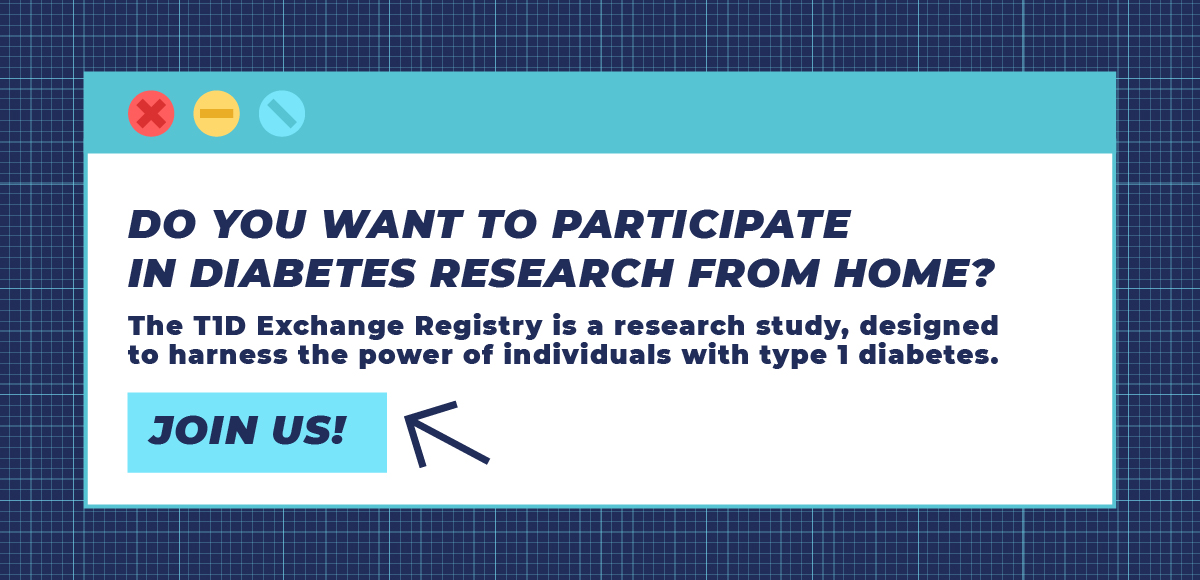
Sign up for a new account.
And get access to
The latest T1D content
Research that matters
Our daily questions
Sign up by entering your info below.
Reset Your Password
Don't worry.
We will email you instructions to reset your
password.
Vitamin D plays a pivotal role in the immune system, muscle, bone, and brain health. But did you know that low vitamin D levels may increase the risk of developing type 1 and type 2 diabetes?
With 1 in 4 people in the U.S. having suboptimal levels, vitamin D deficiency is a common, treatable health concern. While it can affect anyone at any age, having limited sun exposure, darker skin, and certain health conditions increases a person’s chance of having low vitamin D levels.
Getting enough vitamin D can be tricky. Despite adequate sunlight exposure and thoughtful food choices, some people will still have a vitamin D level that’s not in a healthy, supportive range.
Here, we’ll discuss ways to optimize vitamin D levels, minimize related health implications, and discover its relationship with diabetes and other health conditions. Read on to learn more from our expert interview with Jennifer Okemah, MS, RDN, CDCES, and owner of Salute Nutrition.
What is vitamin D, and why is it so important?
You may know vitamin D as a “sunshine” vitamin because the body makes it in response to the sun, but vitamin D is miscategorized, said Okemah.
“While it’s called vitamin D, it acts more as a hormone, which is really interesting,” she said. “It’s created in the body and serves many different functions.”
“It’s easiest to associate vitamin D with bone health, as in growth and density,” but Okemah also pointed out the effects vitamin D levels can have on someone’s:
- Muscles and their ability to move
- Nerves and their ability to carry messages between the brain and body
- Immune system and its ability to fight off invading viruses and bacteria
Vitamin D also importantly acts as a natural anti-inflammatory and antioxidant with protective properties that support these systems.
Why do some people develop vitamin D deficiency?
Getting enough vitamin D from dietary sources and sun exposure can be difficult.
Few foods naturally contain vitamin D, such as oily fish like salmon, sardines, and tuna. That’s why you’ll see “vitamin D fortified” on certain labels, including cereals, cow and some plant-based milks, juices, and other items.
Moreover, certain health conditions such as inflammatory bowel disease, celiac disease, and liver/kidney disease can inhibit someone’s ability to absorb or convert vitamin D to its active form.
Okemah explained, “Vitamin D has to be converted in the liver and kidneys. This is why the connection to the kidneys is so important with diabetes. If there is any sort of kidney insufficiency, it can impact someone’s ability to convert vitamin D.”
Is it an absorption or a conversion issue?
Put simply, If it’s not a conversion issue, it’s an absorption issue. And if it’s an absorption issue, then simple supplements aren’t going to help. That’s why when someone has a low vitamin D value, Okemah wants to know the root cause.
“You have to remember that deficiency doesn’t necessarily mean someone is ingesting too little vitamin D or getting too little sunlight,” explained Okemah. “It could be a conversion issue.”
In other words, “as it relates specifically to diabetes, you may be ingesting a form of vitamin D, but it can be unusable. So you could be taking in enough vitamin D and getting enough sunshine, but you could still have a deficiency.”
“When there are digestive tract issues, vitamin D absorption can be limited. Meaning, if your gut or microbiome is ‘off’ in any way, such as with Crohn’s disease or another digestive disorder, you’ll need to get tested.”
Skin color can add to the issue because melanin is a protein in the human skin. “The darker the protein and the darker the skin, the more it blocks that conversion,” explained Okemah.
Will I notice symptoms if my vitamin D is low?
Chances are you may not. And if you do, you likely won’t identify them as vitamin D-related. That’s because there isn’t a set of symptoms that you would be like, “Oh, that’s definitely vitamin D,” explained Okemah. “It’s also why we check levels frequently with T1D.”
“If you take vitamin D supplements, it’s not like you’ll suddenly feel better and have all sorts of energy. It’s not like that. It works in the background and builds up over time, protecting you and your immune system.”
How are vitamin D levels measured?
A healthcare provider can order a simple blood test that measures levels of 25-hydroxyvitamin D. “You may have to speak up and request vitamin D testing. There’s nothing wrong with that,” said Okemah. “Your provider should absolutely say, ‘OK, no problem, let me put that on the lab order.’”
As a general rule, testing should be done at least once a year. If your results are low or you make a therapeutic change, have them repeat testing in three months, suggests Okemah.
While there are varied interpretations of optimal blood vitamin D levels, the Endocrine Society defines vitamin D deficiency as levels less than 30 ng/mL, with the preferred range between 40 and 60 ng/mL.
Here’s the tricky thing. “There’s very little agreement on what is healthy and what is not. Even amongst experts, they can’t agree on what is exactly defined as low and what is exactly defined as high.”
“With T1D, vitamin D levels provide another insight or indicator into kidney health and if conversion is happening,” said Okemah. “If someone has kidney issues, it will impact vitamin D levels.”
Are low vitamin D levels a risk factor for developing T1D?
“Yes, we would say there’s a strong correlation,” said Okemah. Evidence suggests a relationship between adequate vitamin D levels in early life and a reduced risk of T1D.
“Research is showing that vitamin D deficiency can cause beta cell damage. So, if you have beta cells, a vitamin D deficiency can create more issues and catapult someone towards T1D if they have a genetic predisposition. The research findings are very interesting.”
Further studies are needed to better understand vitamin D’s role in beta cell preservation, autoimmunity, and insulin sensitivity. Given the low risk of taking vitamin D and its potential protective benefits, research suggests considering daily supplements in those living with or at high risk for developing T1D.
Research also shows correlations between low vitamin D levels and type 2 diabetes (T2D). More research is needed to understand optimal vitamin D levels better — and whether taking vitamin D3 can help prevent, or even reverse, T2D.
How do I support healthy levels of vitamin D?
“Vitamin D is something that we all need. And again, we don’t get much of it from food. We get some of it from fortified foods, but we don’t get a ton of it,” said Okemah.
Vitamin D3 (cholecalciferol) supplements are typically suggested. That’s because research shows it’s more effective at raising vitamin D levels than vitamin D2. 
While vitamin D is converted by sunlight, many people use sunscreen regularly, which can block the conversion of vitamin D.
So, should you get more sunshine without sunscreen? The American Academy of Dermatology Association says: No. Boosting vitamin D levels through sun exposure or tanning beds is not recommended. Both are known risk factors for the development of skin cancer.
Plus, depending on your location, sunshine may be at a minimum at certain times of the year.
Vitamin D3 comes in different doses. Recommendations are based on your age, vitamin D level, and underlying health conditions. If needed, vitamin D3 can be given intramuscularly (IM) for known absorption or deficiency issues. Your provider will recommend what’s best for you.
Vit D3 supplement tips:
- Take your recommended dose with food for better absorption.
- Look for “USP” (U.S. Pharmacopeia) on the label — it means the vitamin D3 was third-party tested.
Can I take too much vitamin D?
Yes, while rare, having high vitamin D levels or vitamin D toxicity is a real thing. In other words, more is not always better. That’s why having a conversation with your healthcare provider is important.
Vitamin D is a fat-soluble vitamin, which is different than water-soluble vitamins. If you get too much of a water-soluble vitamin, it’ll leave your body in your urine. Vitamin D, on the other hand, is stored in the body’s liver and fat.
Here’s why you should be concerned: Too much vitamin D can lead to high calcium levels in the blood. This can result in kidney stones and other serious kidney issues. Someone may also have nausea, vomiting, bone pain, headaches, frequent urination, or an irregular heartbeat.
Take a scientific approach to vitamin D by talking with your healthcare provider before starting. They’ll provide dosing recommendations and order regular testing to measure the vitamin D levels in your blood to support your needs best.
Jewels Doskicz
Related Stories
3 Comments
Vitamin D and Diabetes: What You Need to Know Cancel reply
You must be logged in to post a comment.








Vitamin D’s role in overall health is undeniable, especially in supporting the immune system, bones, and muscles. Its link to diabetes risk highlights the importance of maintaining optimal levels through balanced sun exposure, diet, and supplements. Consulting a healthcare provider for regular testing and proper supplementation ensures safe and effective vitamin D management. Read more here https://bookcoverhub.com/ebook-cover-design/
Vitamin D plays a crucial role in supporting overall health and may even help improve insulin sensitivity for people managing diabetes. For those who enjoy exploring health-related apps and tools, speed hack provides access to innovative app versions that enhance performance and functionality.
Vitamin D plays an important role in maintaining healthy blood sugar levels and supporting overall immune function, especially for people managing diabetes. For those who enjoy exploring wellness and lifestyle apps, APKREXO offers a wide selection of useful tools and resources to stay informed and healthy.